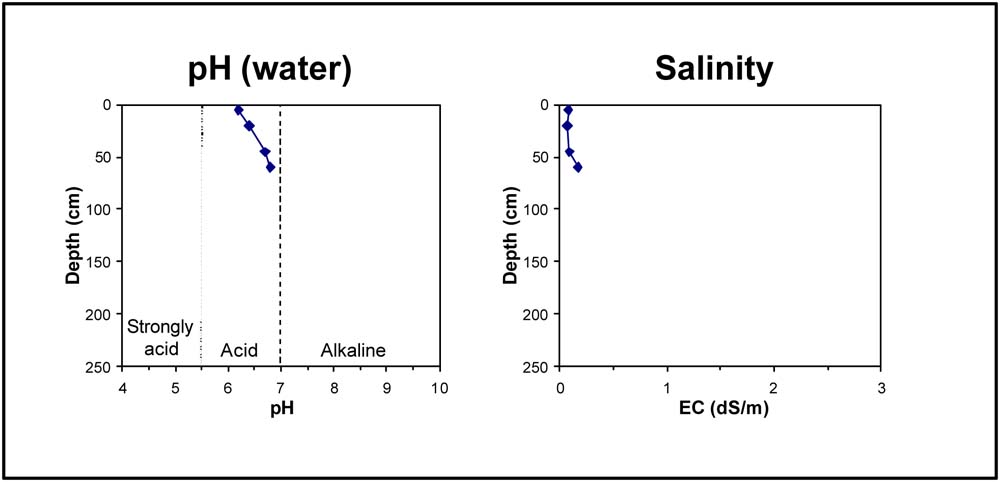MM896
| Site: MM896 | Land Unit: Mount Clay Rises |
| Aust. Soil Class.: Haplic, ?, Red CHROMOSOL (confidence level 4) | |
| General Land Unit Description: The undulating to rolling rises and low hills in the Mount Clay area consist of red or brown Chromosols with brown coloured topsoils. There are minor occurrences of friable Red Dermosols particularly on the steeper slopes around the border of the unit. The redder well-structured soils may have a high free iron percentage and may have a higher capability of supporting a range of land uses due to favourable physical and chemical properties. |
Site Description:
| Geology: Quaternary basalt | Landform pattern: Rolling to undulating rises and low hills |
| Position in landscape: Mid slope | Internal drainage: Moderately well drained |
Soil Profile Morphology
| A1 | 0-10 cm | Dark reddish brown (5YR3/2) clay loam, moderate blocky structure (10-20 mm), firm consistence when dry and weak when moist, pH 6.2 . Sharp transition to: |
| Subsoil | ||
| B21 | 10-30 cm | Reddish brown (5YR4/4) medium clay, weak blocky structure (5-10 mm), weak consistence when dry and moist; ferromanganiferous nodules are common, pH 6.4. Clear transition to: |
| B22 | 30-60 cm | Reddish brown (5YR3/4) heavy clay, moderate blocky structure (5-10 mm), rough fabric, very firm consistence when moist, basalt fragments are common (200-600 mm), ferruginous nodules (6-20 mm) are common, pH 6.7. Gradual transition to: |
| B23 | 60+ cm | Red (2.5YR4/6) heavy clay, many basalt fragments (60-200 mm), pH 6.8. |
Key profile features:
- Strong texture contrast between topsoil and subsoil
- Many basalt fragments at depth



